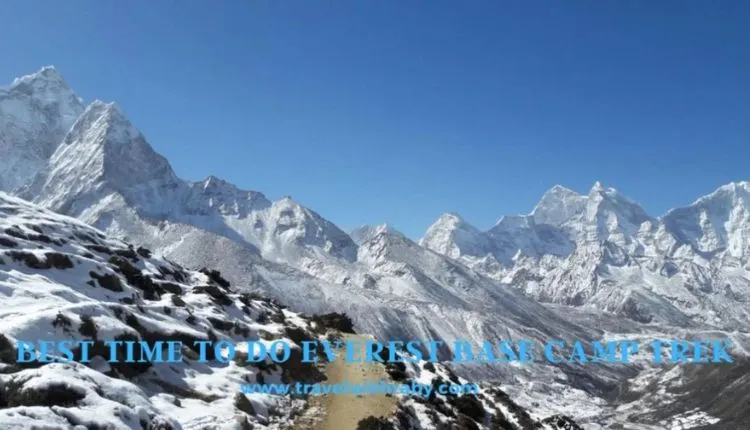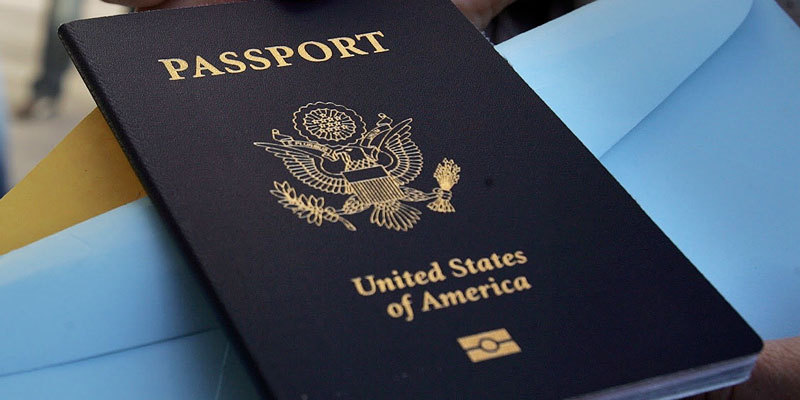
Everest Base Camp Trek – Choosing The Right Time To Trek
The Everest base camp trek is one of the most popular trekking trails in the world. This high-altitude hike takes you through hilltop monasteries and Himalayan market towns, before eventually reaching the iconic start point of all Everest expeditions. The Everest base camp trek offers a heady mix of natural beauty, fascinating culture and an unforgettable personal sense of achievement. However, it’s important to plan your trip in the right season for optimal results.
Weather
The weather in and around Everest Base Camp varies depending on the season. Spring and autumn are the best times to trek because they offer comparatively good visibility, a low risk of rain, and a pleasantly cool climate. The winter months of December and January are colder than other seasons. Temperatures in the lower elevations can reach a maximum of 4 degrees C in the daytime, but they drop down to -14 degrees Celsius during the night.
Early winters also bring chilly winds which can make your everest base camp trek more challenging. Expect freezing temperatures in the mornings and nights as well, so you’ll want to pack some extra layers. March is another ideal time for trekking in the mountains. You’ll enjoy sunny days with clear skies and warm temperatures. The month of April is another popular trekking month in Nepal. Although Kathmandu can be hot during this time, the mountains are still mild and a breeze is not uncommon during the afternoon.
Terrain
The Everest base camp trek is a popular trek in the Khumbu region of Nepal. It offers breathtaking views of Mount Everest, the highest mountain in the world. You’ll also experience a heady mix of rhododendron forests, rich Sherpa culture and rivers, foothills and glacial moraines along the way. This is a trek that combines moderate and extreme hikes, perfect for adventurers.
Spring is the best time to trek to Everest Base Camp, with clear skies and fantastic weather conditions. It’s also the time of year when the real climbing season takes place, so you can watch hardcore mountaineers practising for a summit push up Mount Everest. The trek is also a great way to experience the beauty and charm of the Khumbu valley. But it’s important to note that the monsoon season comes into play, which means rain and other weather conditions can be unpredictable at times. You should also consider bringing a SteriPEN UV water purifier to help keep your drinking water clean and safe.
Altitude
Altitude is one of the main concerns for people considering an Everest base camp trek. As you climb higher in altitude your body’s oxygen saturation drops and you can suffer from altitude sickness. Symptoms include dizziness, headaches, nausea and even more serious conditions like cerebral and pulmonary edema. As you move up the mountain you’ll likely spend time in villages along the way to acclimatize to the altitude. During days off you may have the option to do acclimatization hikes which will help prepare your body for the trek ahead.
Day 8 of the trek will be a big day as you’ll leave Lobuche and hike alongside the Khumbu glacier towards Gorak Shep. After a short break, you’ll be ready to visit Everest base camp itself and have the chance to see Mount Everest for the first time! The best time to do an Everest base camp trek is in the spring (March and April). This is the peak trekking season. It’s also when the landscape blooms with gorgeous rhododendrons and other wildflowers.
Getting There
The trek to Everest Base Camp is one of the most popular hiking trails in the world, and for good reason. It combines breathtaking scenery with a thrilling sense of adventure. Getting to Everest Base Camp is an easy way to get started on your hike to the summit, but it does require some planning and logistics. Thankfully, you can book an everest base camp trek with us to ensure you have the right equipment and a knowledgeable guide to help you along the way!
Your journey begins in Kathmandu, where you take a quick flight to Lukla. From there, you’ll start your trek to Everest Base Camp on a well-marked trail. You’ll walk 4 to 6 hours a day for 12 days, with two acclimatization days included. If you’re fit enough, you should be able to complete this trek without a problem. The final part of the trek is a climb up Kala Patthar, which offers some of the best views of Everest and its surrounding peaks. If you’re a confident climber, you can even head to the summit on your final day!
Final Thought
So, Everest base camp trek is an incredible journey into the heart of the Himalayas. It offers a rare glimpse into local culture, with traditional Sherpa villages, hidden Gompas, stunning mountain views, and exceptional natural beauty. The route is a serious endurance test, especially at higher altitudes. Acclimatisation is essential and patience is a must.




